Login
Registered users

SITE LOCATION AND DEVELOPMENT TARGET The site is located in "Tokiwabashi District", adjacent to one of Japan’s largest stations – Tokyo Station. To effectively utilize the site while allowing the maintenance and upgrading of the functions of the existing substation and sewage pumps, a new international financial and business district with two skyscrapers at its core – the 390-meter Torch Tower, which will be the tallest building in Japan and the 212-meter Tokiwabashi Tower, was envisioned. THE NEXUS BETWEEN TOWN AND BUSTLING ATMOSPHERE Being the only development left behind within Tokyo Station area, it necessitated connection between the landscape, and bustle of urban life, serving as the nexus of the surrounding area where development had progressed. By building upwards and placing the skyscrapers closer to the periphery of the site, the large-scale plaza created in the center of the district helps close the distance between Tokyo Station and the Nihonbashi business district physically and psychologically. “TOKIWABASHI TOWER” Tokiwabashi Tower (GFA: 146,000m2), the first tower to be completed, is a next-generation business complex that provides offices with rentable conference rooms, and a shared cafeteria and lounge to support innovation and diverse work styles aside from the usual retail services and facilities. THREE-DIMENSIONAL PARK Facing the plaza, the staggered glass boxes housing restaurants and bars along the green terraces enhances the blending of people’s activities and the city. The 1st to 3rd floors are composed of Food and Beverage shops, and designed as a three-dimensional park integrating a plaza and green terraces. This three-dimensional space allows the public to access the building and use the restaurants and cafes for multiple purposes. Additionally, the terrace seats are likely to be used to help maintain safe-distancing between people post covid-19. THE FACADE The curved corner of the tower facing the road intersection was determined by wind environment simulation to minimize the effects of pedestrian-level wind allowing the building to softly connect with its surroundings and hence, draw people in. The exterior of the tower section is composed of a grid that references the wooden lattices and shoji screens used in the outer skin of Japanese architecture while the metallic color scheme expresses the history of the area where companies dealing with iron were once concentrated in. INTERIOR DESIGN USING NATURAL MATERIALS The 2nd floor entrance lobby and the 3rd, 8th, and 9th floor feature terrazzo walls inspired by the castle walls of Edo Castle and the stone masonry of the Tokiwabashi Bridge. Wood materials and ornamental plants also have been placed throughout the building to create a comfortable common space with a sense of calmness. Japanese people have a deep affinity for stone and wood which have been used in Japanese architecture since ancient times. The abundant use of natural materials has led to increased relaxation of office workers which in turn has led to increased productivity and a sense of fulfillment. CHALLENGING STRUCTURAL DESIGN Within the Tokiwabashi district, the Tokiwabashi Tower site is surrounded by the Nihonbashi River, an underground highway and various substations making it a very narrow and irregular-shaped site. To compete as a large-scale office, it was necessary to expand the floor plates of the upper floors. By designing inclined columns extending diagonally from the ground floor, the floors above the 8th floor could be expanded. In an earthquake and typhoon-prone country like Japan, dampers and braces must. FLOOD CONTROL MEASURES The 4th to 7th floors are used for critical equipment and mechanical rooms. This is an effective countermeasure for Japan where heavy rains and typhoons have caused frequent flooding and storm surges. A building designed to be safe and secure would enable the building’s high business continuity performance. CORRESPONDENCE TO WORK STYLE The 8th to 38th floors consist of offices. On the 8th floor, there are lounges and cafeterias for the exclusive use of office workers as well as private rooms and rentable conference rooms to support businesses. By enhancing these common areas in addition to their own offices, they can respond to the diversity and variety of work styles FUTURE UPGRADE This creation of a new activity hub within the district will promote cultural exchanges and connections with nearby districts while further upgrades can be looked forward to in the future with the completion of the Torch Tower. REVITALIZATION OF NIHONBASHI RIVER To revitalize the Nihonbashi River that has been supporting people's lives since the Edo period (1603-1867), green areas, promenades, terraces were arranged reusing existing trees along the river. The revitalization project was done together with the adjoining districts along the river and has achieved high ratings for various environmental certifications such as SITES, SCEGES, and ABINC. REGIONAL REVITALIZATION It is important for Tokyo to become a gateway city that also promotes regional tourism. To create opportunities to introduce other regions of Japan to foreigners, some regional culture such as the Niigata’s Nishikigoi pond, Fukushima’s grass plaza and Shizuoka’s flora are featured here. By also inviting famous regional cuisines restaurants from all over Japan as tenants, tourists can experience the local charms of not just Tokyo, but of various Japanese regions.
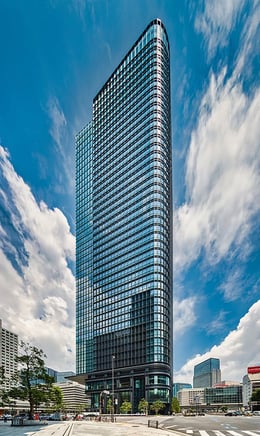


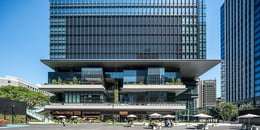




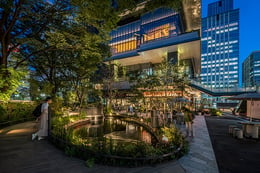



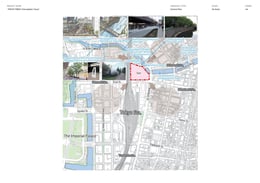

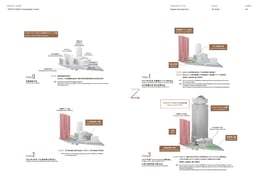





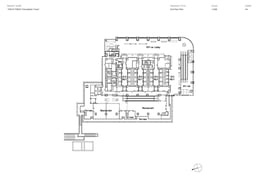




The roots of Mitsubishi Jisho Design lie in Marunouchi Architectural Office, the architectural design firm founded in 1890 which designed Japan’s first modern office building. Over the subsequent decades, the firm went on to design a series of iconic brick buildings in the central Marunouchi district of Tokyo. In the 1960s, responding to rapid economic growth and the burgeoning demand for office space, the area was transformed into a harmonious central business district, with new buildings designed to conform to a uniform height of 31 meters. In the 21st century, these buildings have been replaced with high-rise towers and the area has been reimagined once more as a lively district with vibrant commercial and cultural functions. Mitsubishi Jisho Sekkei has led the development and renewal of the Marunouchi district across three generations, allowing it to bring unparalleled experience to bear in architectural and urban development projects throughout Japan and the world.